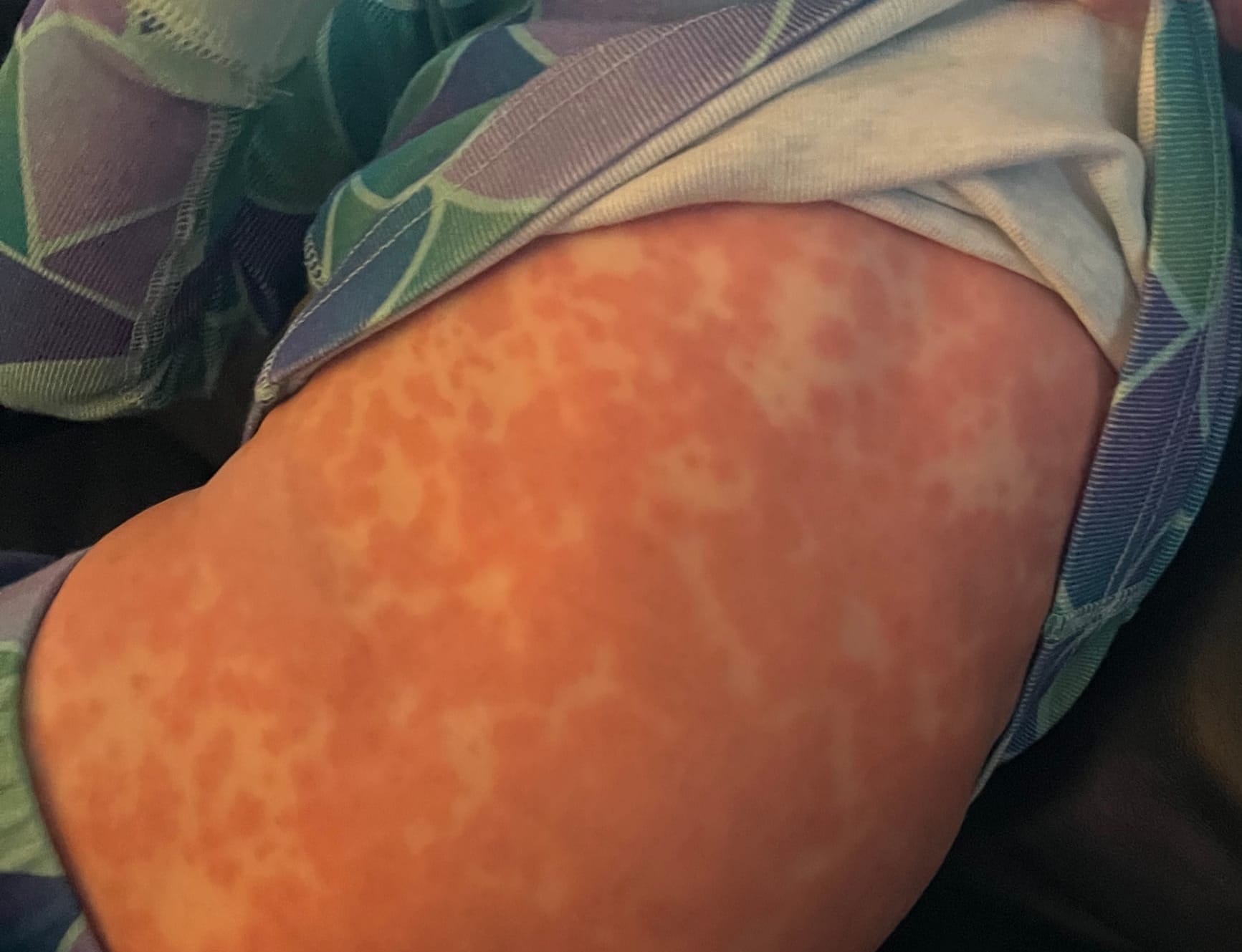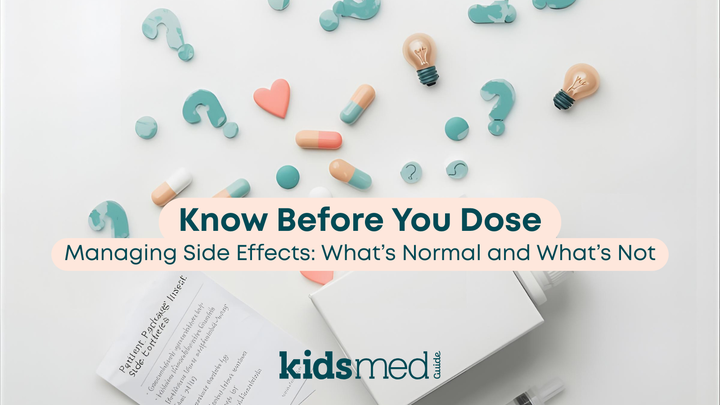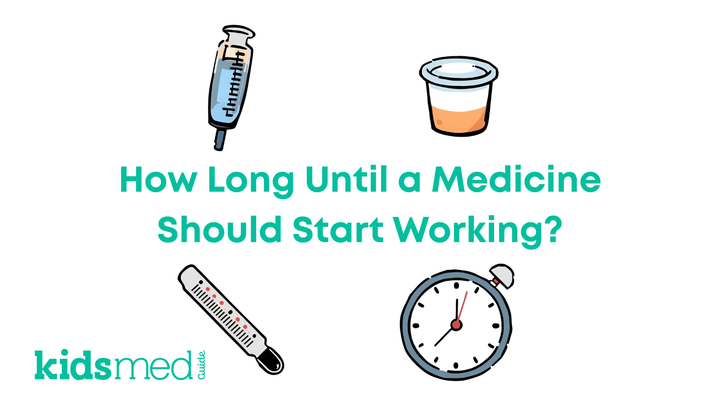Drug Allergies Explained: A Parent’s Guide to Symptoms and Treatment

If your child has been diagnosed with a drug allergy, chances are you have a lot of questions. My daughter was diagnosed with an allergy to amoxicillin a few years ago. She was OK, but it’s not an experience I’m likely to forget!
Allergic reactions can be unnerving, and severe reactions can even be life-threatening. In this article, we will explain the difference between a drug allergy and an adverse reaction and discuss the different types of drug allergies.
Is it a Drug Allergy or an Adverse Reaction?
Any drug can cause a reaction—heck, in a sense, that’s why we use prescription medications—to induce some action in the body! Ideally, drugs will have the intended beneficial effect with minimal side effects and no allergic reactions. However, side effects or adverse drug reactions sometimes occur.
For example, amoxicillin given to cure an ear infection may cause some tummy upset and maybe diarrhea. These are typical side effects that occur reasonably often; while uncomfortable, they're usually not cause for concern or signs of an allergy.
Allergic reactions are much less common than adverse drug reactions, but they have a similar definition:
- Drug allergies are adverse reactions to medications that involve the immune system. The immune system overreacts to the administration of a drug. Drug allergies are rare.
- Adverse drug reactions (or side effects) do not involve the immune system. They are often reported in the drug package insert as a potential concern or expected issue. Adverse drug reactions are unwanted or unintended secondary effects. They may be rare or common.
While many people experience side effects from drugs, actual allergic reactions only occur in a small percentage of patients. Understanding the different types of drug allergies can help patients and parents recognize potential reactions and seek appropriate care. Knowledge is power!
Types of Drug Allergies
Drug allergies involve the immune system. For those unfamiliar (i.e., most of us!), the immune system is an incredibly complex part of the body that fights germs and keeps you healthy.
Most of the time, the immune system works well, activating unique fighter molecules in the body to kill viruses and harmful bacteria. But sometimes, the immune system can overreact to a substance in the body, such as a drug, and induce a significant response inappropriately.
Drug allergies are classified into four main types based on what part of the immune system is involved:
Type I (immediate) reactions
Type I reactions are the most common and well-known form of drug allergy. They can range from mild to severe, but the severe reactions involving swelling or trouble breathing are a medical emergency.
Type I reactions are caused by too much release of an antibody (aka immune system fighter) known as “IgE.” These reactions typically occur fast, within minutes to hours after taking the medication.
Common symptoms include:
- Hives or itchy skin rash
- Swelling, especially of the face, tongue, or throat
- Wheezing or difficulty breathing
- Anaphylaxis (a severe, potentially life-threatening allergic reaction)
Virtually any drug or substance can cause a Type I reaction. The most common culprits include penicillin and other antibiotics, aspirin, and non-steroidal anti-inflammatory drugs (NSAIDs) such as ibuprofen.
This allergic reaction is usually treated with an antihistamine like diphenhydramine (Benadryl®) or cetirizine (Zyrtec®). For severe reactions, such as hives, trouble breathing, wheezing, swelling of the lips or face, etc., an intramuscular injection of epinephrine (Epipen®) is needed. Other supportive care medicines may be used.
If you suspect a Type I reaction after your child receives a drug, seek immediate medical care.
Type II (cytotoxic) reactions
Type II reactions involve antibodies attacking and destroying the body's cells. These reactions are less common but can be severe. There are likely no obvious outward signs, but patients will usually appear quite ill, and a doctor would do bloodwork to determine the cause. Symptoms may include:
- Low blood cell counts (anemia, thrombocytopenia, neutropenia)
- Organ damage, especially to the kidneys or liver
Medications that trigger Type II reactions include certain antibiotics, anti-seizure drugs, and some anti-inflammatory medications.
Type III (immune complex) reactions
Type III reactions are interesting (scientifically, if you’re a nerd like me. As a parent, they are not interesting, just horrifying).
Type III reactions occur when antibodies from the immune system and drug molecules bind together. Unfortunately, this binding is not a happy pairing... The drug plus antibody combo forms “immune complexes” that deposit in body tissues and cause inflammation. Because this bonding process takes time, these reactions typically develop 1-3 weeks after starting a medication.
Symptoms of type III drug reactions can include:
- Fever
- Joint pain
- Rash or hives
- Swollen lymph nodes
Different types of Type III reactions exist, but serum sickness is probably the most well-known. Antibiotics can cause serum sickness or serum sickness-like reaction (SSLR). Type III reactions can be painful and take many weeks to go away.
My child experienced SSLR from amoxicillin. It started as a mild rash that looked like a typical amoxicillin rash - at first, we hoped it was just a side effect. But within a day, she developed swelling of her face, lips, and extremities, as well as giant hives that seemed to move around her body.
We took her to the emergency room (the hives were concerning, but the swelling of the lips and face was way more concerning!) They did some tests and realized that she also had all of the hallmark signs of SSLR, including fever, joint pain, swollen lymph nodes, and some laboratory findings (she was spilling protein in her urine, among other things).
The good news is she recovered just fine, as most kids do! The bad news is that it took a VERY long time. She had a rash and pain for over a week, and the horrible rash got worse before it got better and took a couple of weeks to completely clear.

Type IV (delayed) reactions
Type IV reactions are not caused by antibodies but by T cells, another important member of the immune system family. These reactions typically develop days to weeks after starting a medication and usually involve the skin.
Common symptoms of type IV (delayed) drug reactions include:
- Skin rashes (especially maculopapular rashes)
- Contact dermatitis
- Rarely, very severe reactions like Stevens-Johnson syndrome or toxic epidermal necrolysis
Many different medications can cause Type IV reactions, including antibiotics, anticonvulsants, and NSAIDs (like ibuprofen).
How are Drug Allergies Diagnosed?
Diagnosing drug allergies is tricky. Symptoms are not always obvious and may be confused with drug side effects or illness symptoms. If you suspect a drug allergy, reach out to your child’s doctor for confirmation.
Doctors will look at the type of medication taken when the reaction happened, and what happened, and consider the patient’s medical history. Blood or skin tests can sometimes be used to confirm the suspicion of an allergy.
How are Drug Allergies Treated?
The primary treatment strategy for drug allergies is to avoid the offending medication. If your child has been diagnosed with a drug allergy, be sure to tell all medical providers at every appointment, including at the pharmacy. For most allergies and most conditions, there are alternative treatment options.
Sometimes, under the guidance of an allergist, patients can try the triggering medication again via a drug challenge. Suppose a drug that a patient is confirmed to be allergic to is needed. In that case, an allergist may recommend a desensitization or allergy challenge (done in the hospital) to trick the body into accepting the triggering medication.
Mild allergic reactions may be treated with antihistamines, such as diphenhydramine (Benadryl®) or cetirizine (Zyrtec®). For more severe reactions, epinephrine is crucial, and other medicines like steroids (for example, methylprednisolone) may be used.
Severe reactions involving the airway, like anaphylaxis, need to be treated with an intramuscular shot of epinephrine (i.e., an Epipen®).
Antihistamines can mask worsening symptoms, so if anaphylaxis is suspected, don't delay in giving an EpiPen®. If your child has a history of severe reactions to any drug (or food or environmental substance like beestings), you should have a prescription for an EpiPen®.
What Else Should Parents Know About Drug Allergies?
Drug allergies are a scary thing to think about, especially if your child has a history of them. They can’t always be prevented or avoided, but parents can keep the following tips in mind:
- Always give your healthcare provider a complete medical history.
- Let your child’s doctor and pharmacist know about any medication allergies (there may be a chance of cross-reaction between certain drugs).
- Always give your child’s medication precisely as prescribed.
- Don’t share medicines between family members; your child should only take what is prescribed.
- Consider keeping an antihistamine like diphenhydramine or cetirizine on standby. This is useful to keep in your medicine cabinet, so you have it ready if your doctor suggests treating your child for any allergic reaction (drug, food, environmental, etc.)!
- Note that you should give an antihistamine only under a doctor's guidance.
- Antihistamines can effectively treat rashes or hives. Still, they can mask worsening symptoms and potentially give a false sense of security when symptoms are severe and intramuscular epinephrine is needed.
- If your child has a history of severe allergic reactions, talk to your pediatrician about a prescription for an EpiPen®.
Conclusion
Drug allergies are complex and involve the immune system. Adverse drug reactions are expected unwanted side effects that occur from taking a medication, and they do not include the immune system. There are several different types of drug allergies, and they can occur at various times during drug treatment.
Allergic reactions can easily be confused with expected drug side effects. The good news is that allergic reactions are rare! But whenever your child takes medication, look for the signs and symptoms described above. Always reach out to your pediatrician for guidance if you suspect a drug allergy.
Severe allergic reactions involving trouble breathing, swelling of the face or throat, wheezing, hives, vomiting, or anything that causes you concern need immediate medical attention.
The following references were used to compile this information:
1. Demoly, P., Adkinson, N. F., Brockow, K., Castells, M., Chiriac, A. M., Greenberger, P. A., ... & Thong, B. Y. (2014). International Consensus on drug allergy. Allergy, 69(4), 420-437.
2. Blumenthal, K. G., Peter, J. G., Trubiano, J. A., & Phillips, E. J. (2019). Antibiotic allergy. The Lancet, 393(10167), 183-198.
3. Solensky, R., & Khan, D. A. (2014). Drug allergy: an updated practice parameter. Annals of Allergy, Asthma & Immunology, 113(4), 341-353.
4. Mirakian, R., Leech, S. C., Krishna, M. T., Richter, A. G., Huber, P. A., Farooque, S., ... & Nasser, S. M. (2015). Management of allergy to penicillins and other beta‐lactams. Clinical & Experimental Allergy, 45(2), 300-327.



